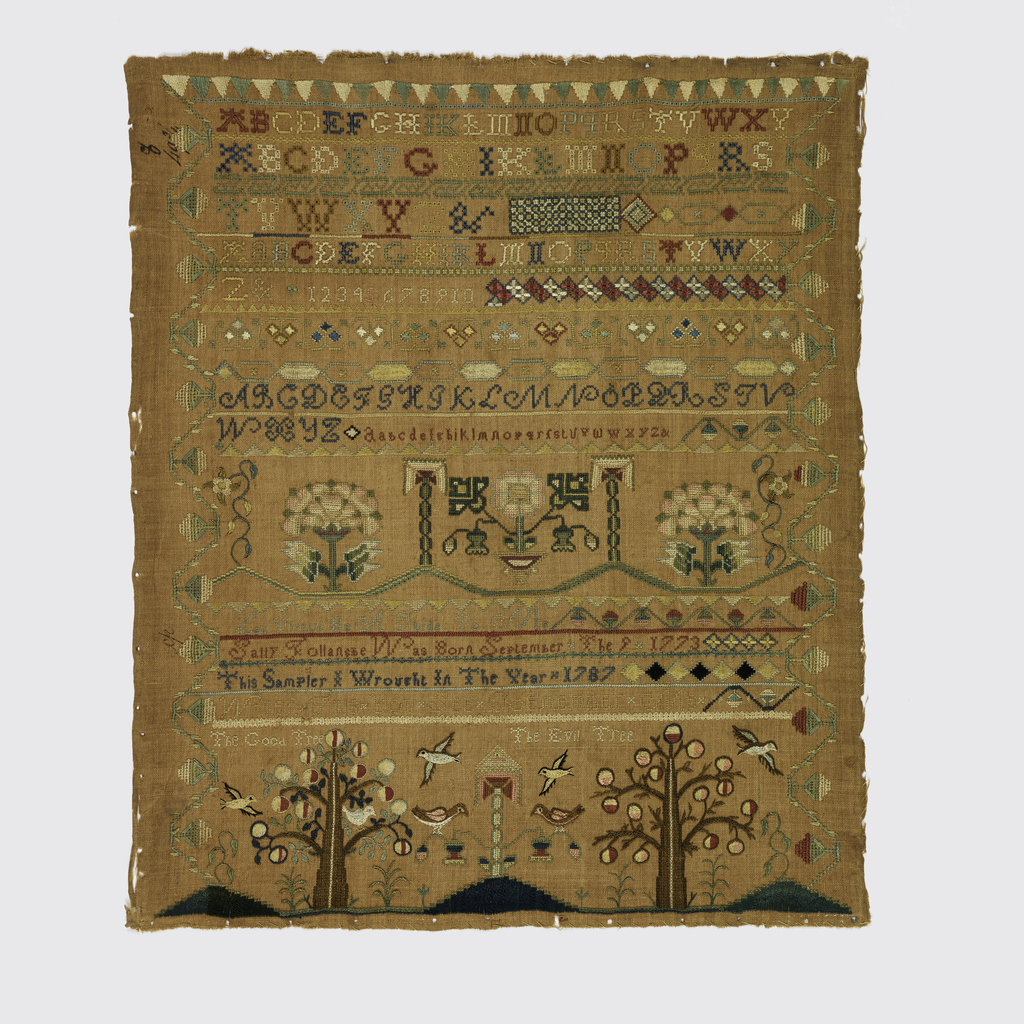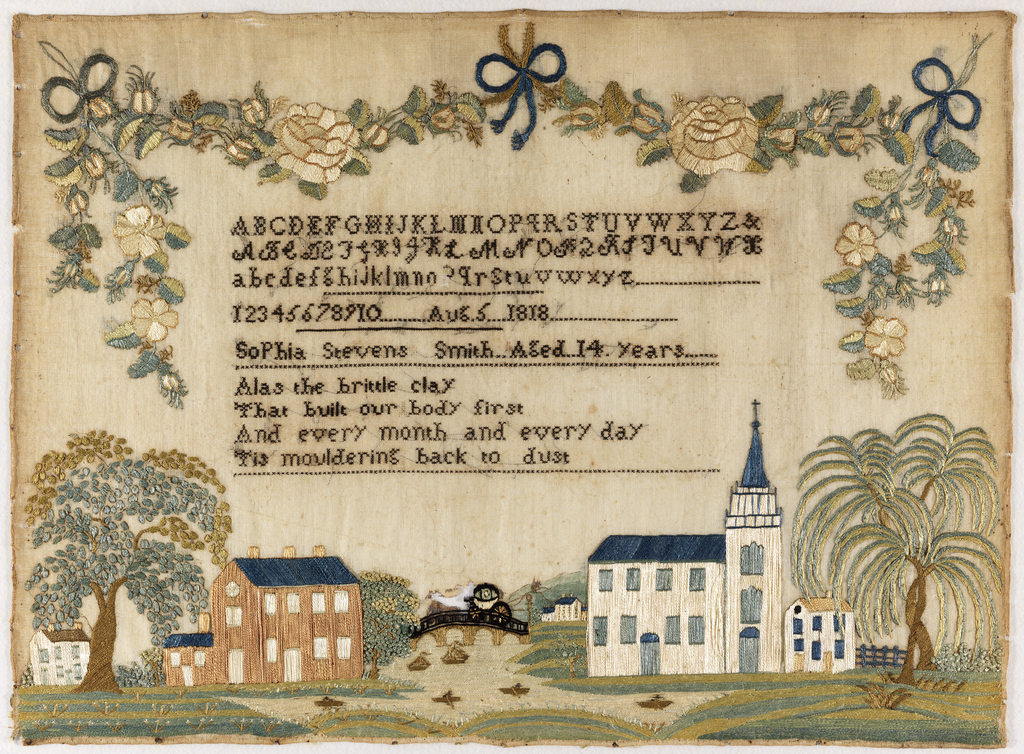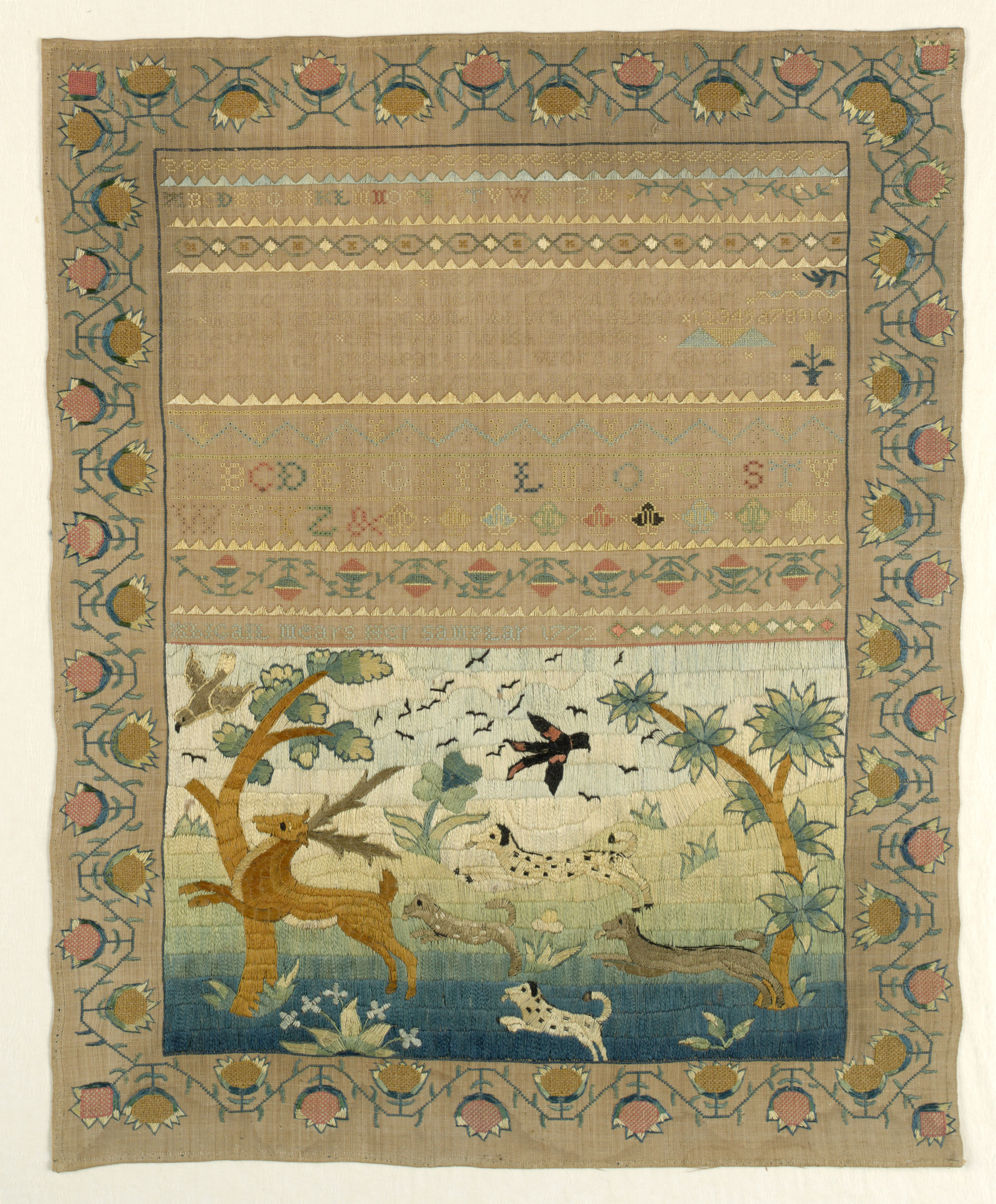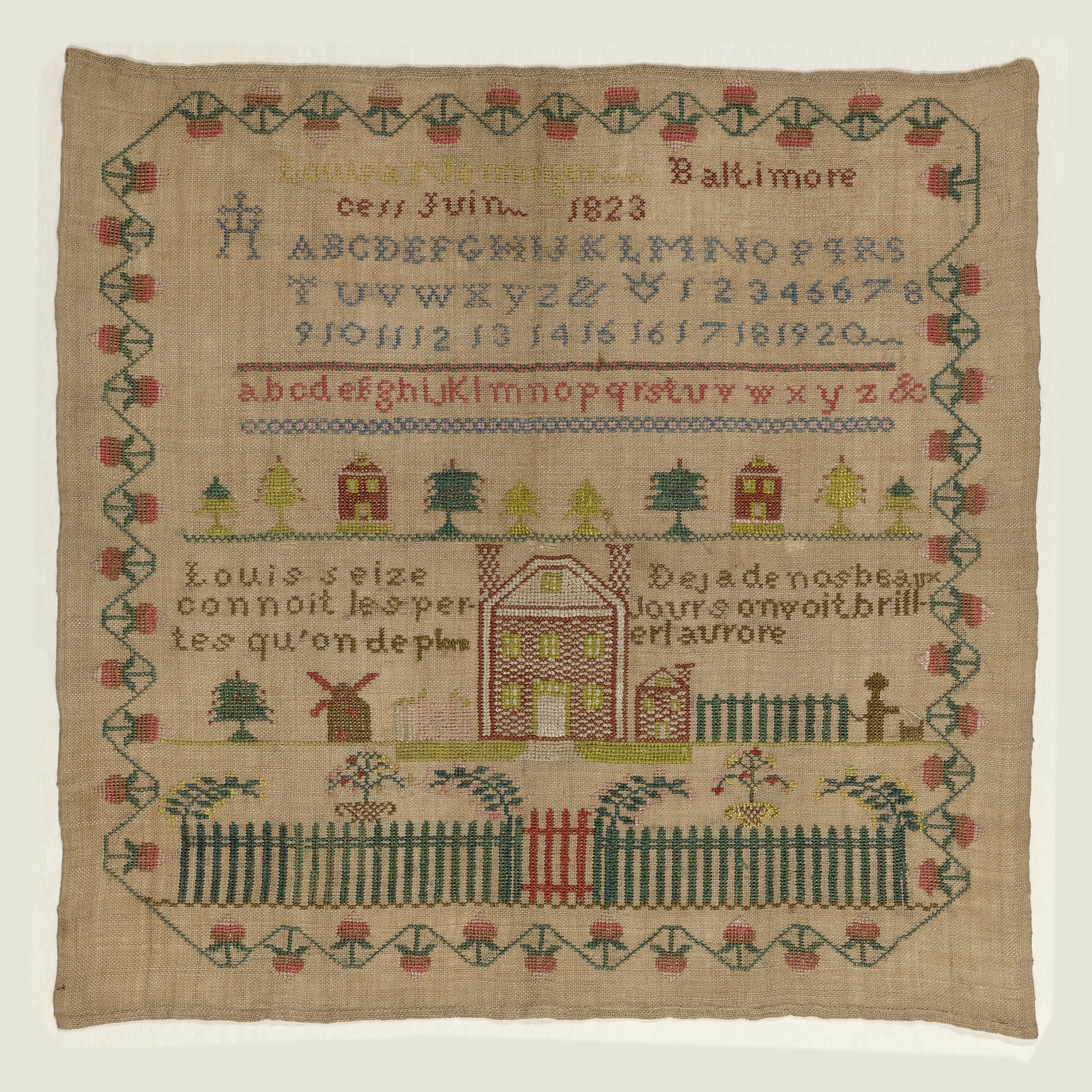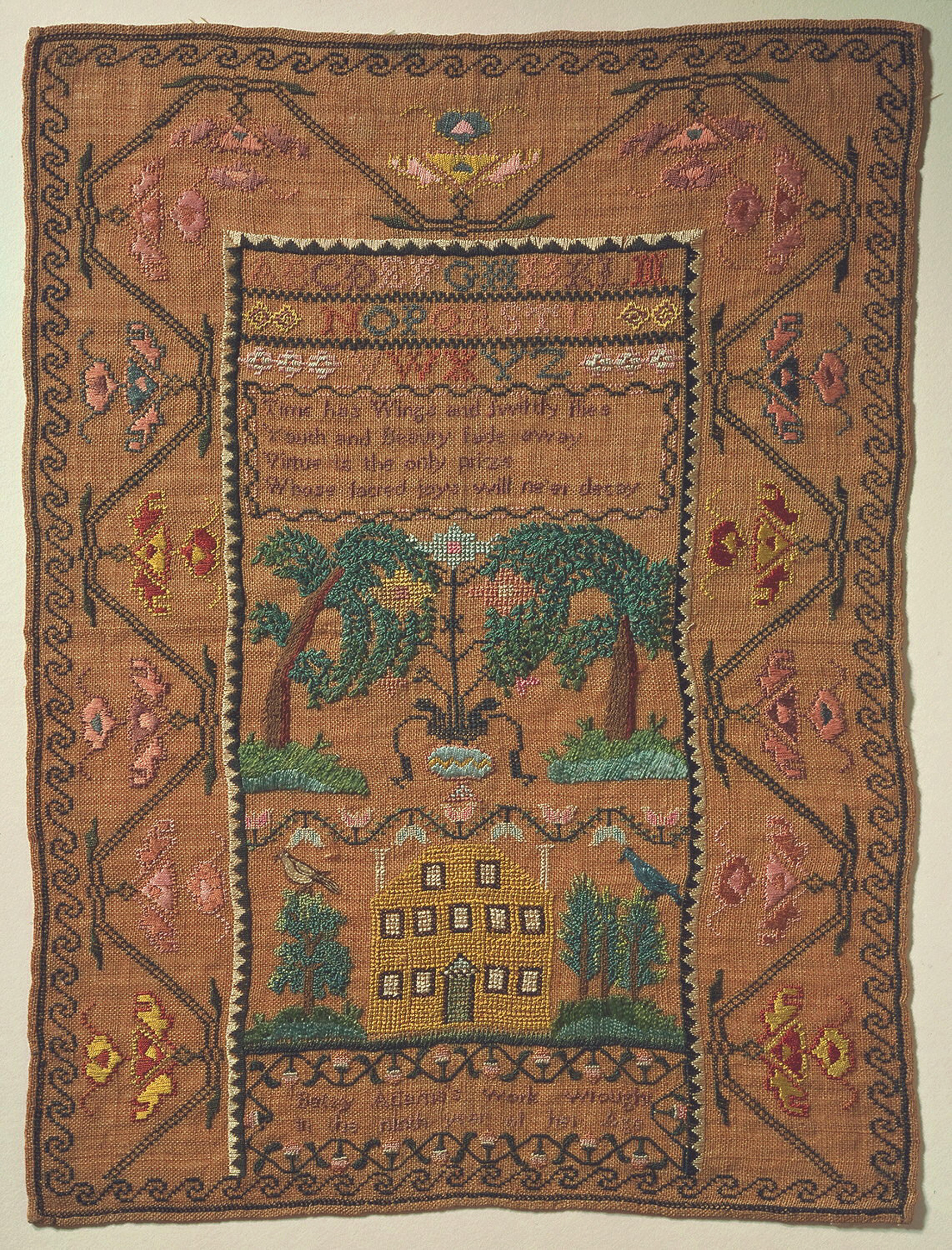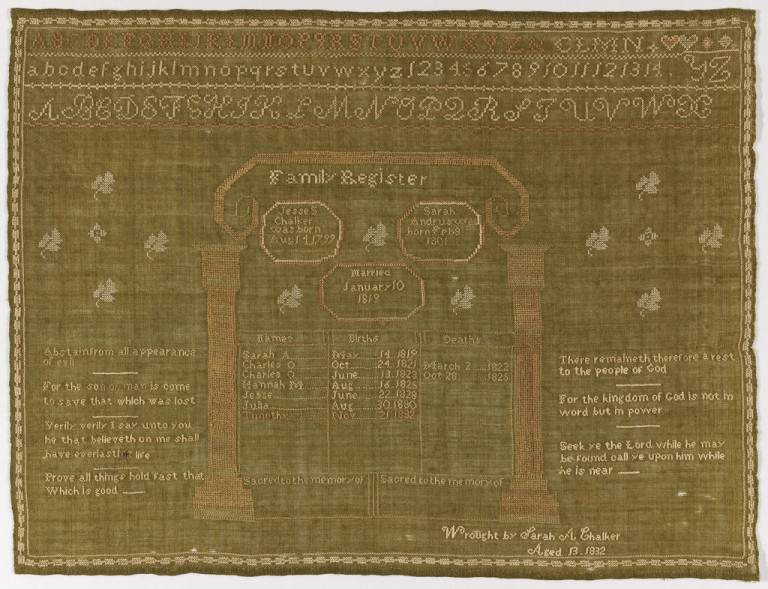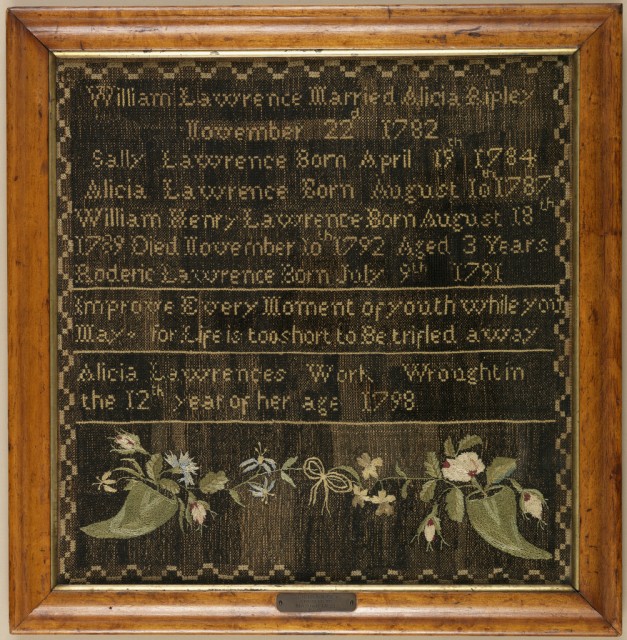Sally Follansbee’s 1787 sampler is part of a group of samplers from the towns of Newbury and Newburyport, Massachusetts. These works can be identified by a number of motifs that were reused and modified from the 1750s through the early 1800s. The stylized floral band on Sally’s piece appears on samplers by several Newbury and...
Sophia Smith’s sampler is part of a distinctive group of Wethersfield, Connecticut, samplers made at two different schools during the first quarter of the nineteenth century. Earlier examples were probably worked at the Abigail Goodrich School, which operated from around 1804 to 1815. Sophia’s is one of a later group of samplers, most likely made...
This sampler, worked by Abigail Mears in 1772, is related to a group of embroideries known as the “fishing lady pictures.” The name originally referred to Boston needlework featuring the same fishing lady, but now encompasses a variety of related pastoral compositions, with or without the fishing lady. From the 1760s, the same types of...
French-speaking Catholics, fleeing the bloody revolutions in France and the Caribbean, settled in large numbers in the Baltimore area. In 1791, priests from the Parisian Society of Saint Suplice established a seminary in west Baltimore conducting religious services in French, and it soon became the center of a rapidly-growing French community. Among the émigrés, both...
Betsy Adams’s sampler is part of a large group of related examples worked from about 1790 until at least 1805 in Boston or nearby towns in Middlesex County. Typical characteristics of these samplers are deeply arcaded borders surrounding a central panel comprising an alphabet, verse, and pictorial elements within a saw-tooth border. The pictorial elements...
Family register samplers, like this example by Sarah A. Chalker, were a way of documenting and preserving family histories. They were frequently worked by schoolgirls as part of the later phase of their needlework education. The information in this sampler is organized in rows and framed by a scrolled arch and classical columns, revealing a...
Considered a genteel accomplishment, needlework was an important component of female education in colonial and federal America. Family register samplers, such as this late 18th century example worked by twelve-year-old Alicia Lawrence (1787–1866) of Hartford, Connecticut, were frequently made during the later phase of girls’ needlework training, and were a popular way of documenting and preserving...
